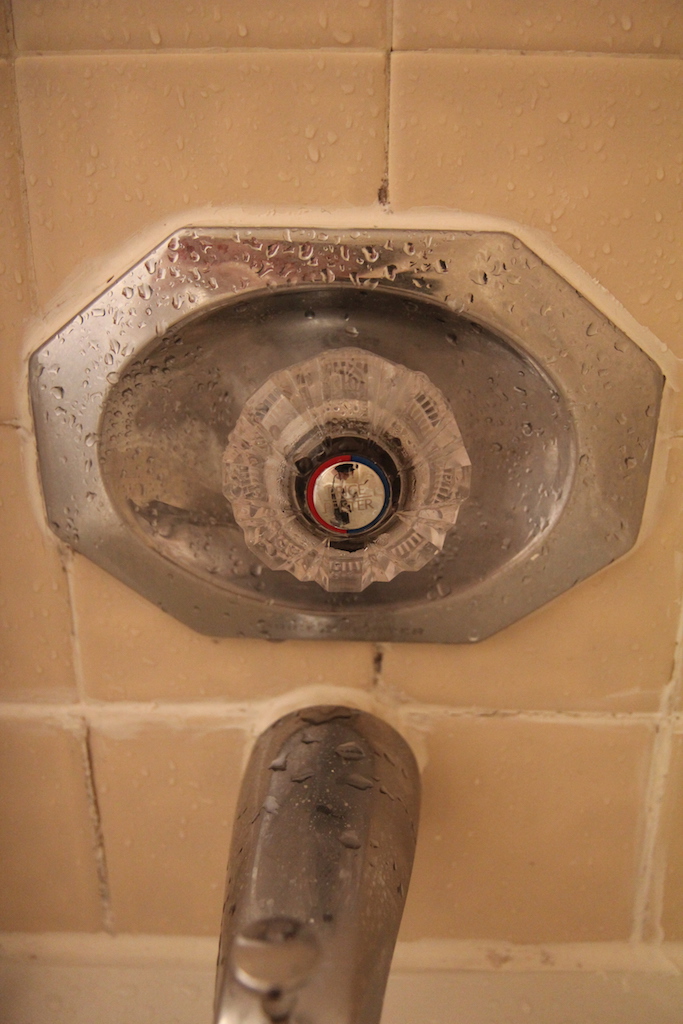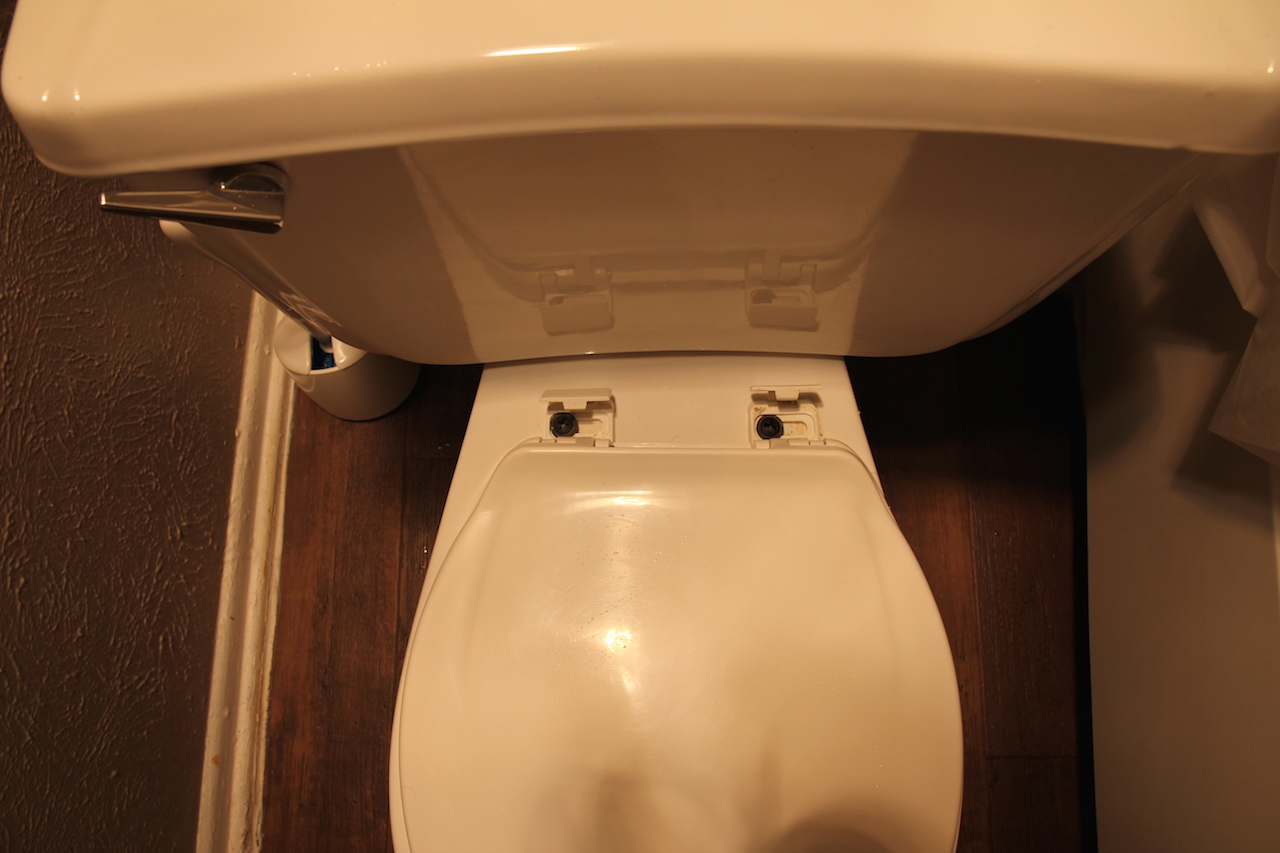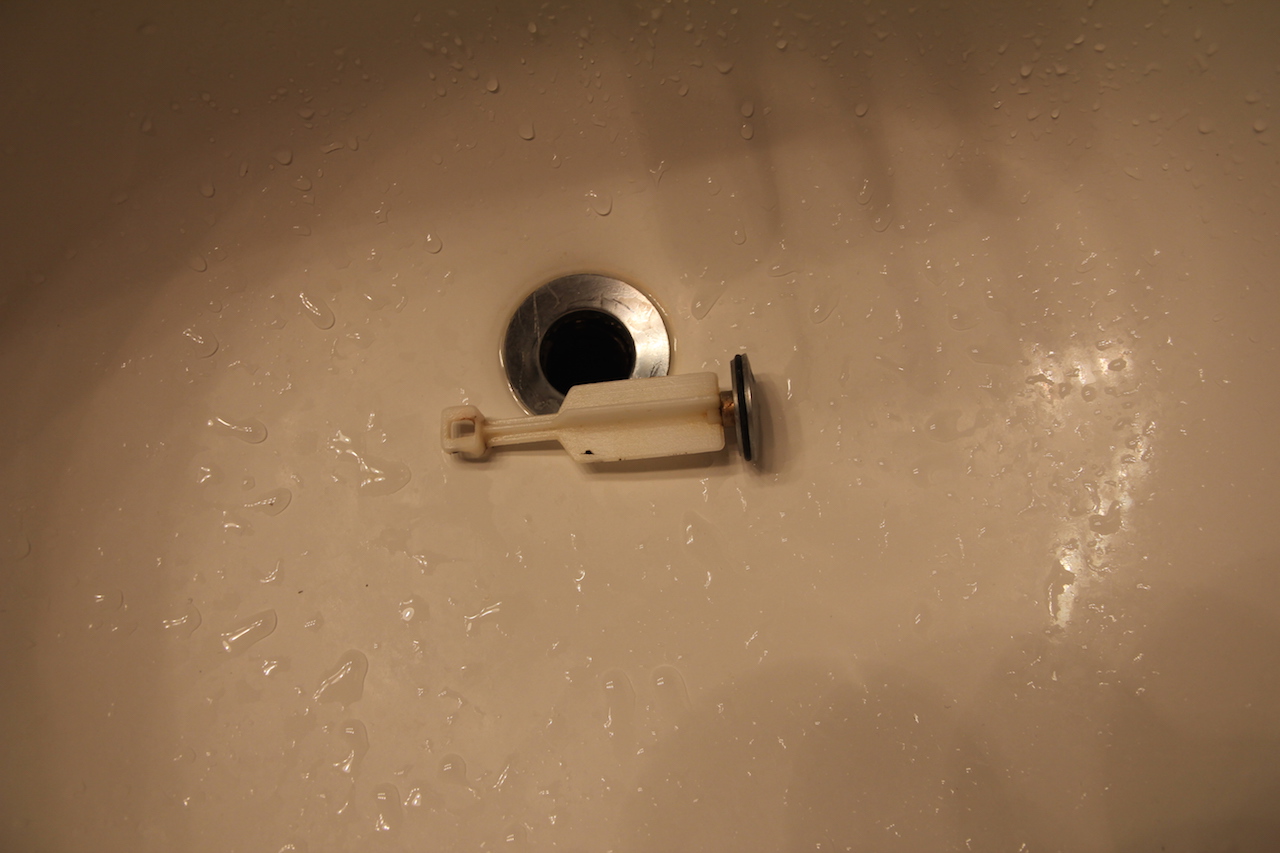(Read Part 1 of the bathroom improvements if you aren’t caught up.)
These next three bathroom improvements aren’t difficult, but take ‘a bit more doing’, and might need some basic tools. The spruce-ups from last time might be the kind of thing that’s intuitive to do, but I feel like these projects don’t always occur to me as possible because they feel more like repairs, and I’m always worried I’ll get in trouble with a landlord for attempting repairs that should be professionally done.
However, I think these three issues are actually very easy to fix and not at all risky!
Wonky toilet seat
Isn’t it annoying when the toilet seat lopes from side to side? That’s what ours did. Turns out, it’s very easy to tighten the screws that hold it on.
Upon investigation, I discovered two little flaps which opened to reveal big plastic screws attaching the toilet seat to the toilet. Each screw emerged on the underside of the toilet and had a washer on the other end.
I started by loosening these considerably, so that I could shift the seat around and clean around all the joins. If kneeling down to clean toilet bits makes you feely all oogy boogy about germs, like me, I recommend doing this when you’ve just cleaned the toilet so you know it’s as clean as possible.
Then I just centered the toilet seat and tightened those screws firmly. I snapped the little flaps shut again and was done! I’m pretty sure previous apartments have had this same wobbly seat problem because of a broken part – and in that case, I’d probably opt now to replace the screw or the toilet seat altogether, because that is as easy as loosening and tightening screws.
Sink plugs
Our sinks have these push-type plugs where you raise and lower a little rod which operates the plug. Mysteriously, the plug in our bathroom sink, after working fine, just came out one day and then of course didn’t work.
I thought for a while that the plastic bit was broken, but upon examination decided it wasn’t and that I would try to reinstall it. The problem, I discovered, was with the lever mechanism below the sink.
The metal rod should have been inserted into a hole in that vertical bar. The plug handle behind the sink moves that bar up and down, moving the lever.
I had to poke the rod through the appropriate hole, and just used trial and error to figure out the right one so that it raised and lowered the rod the right amount. There was a metal gripper thing that kept the rod locked through the hole, which had fallen off and caused the problem, I presume.
Reattaching the sink plug to the rod inside the drain was tricky, but I got it in the end. I had to shine a light down the drain hole and keep trying.
Finally, there’s a nut-type thing at the join where the rod goes into the pipe, and the tightness of it determined how firmly the plug moved up and down and whether it stayed down when you put it down. I had to use a wrench to tighten this, otherwise the plug just flipped up and down too loosely and wouldn’t stay down.
For this project, I found some helpful information online, with diagrams of how the mechanism works. Honestly, half the battle is just figuring out what words to Google! This type of sink plug is a ‘pivot stopper’ or a ‘pop-up stopper’, apparently.
Lowes Hardware – how to repair a pop-up sink stopper
How to connect the pivot stopper in a sink
Gross, loose tap knobs
Both our bathrooms have these single clear plastic shower knobs. But both were dirty INSIDE, as well as having paint spattered on them. Seriously, paint?! The master bath knob was also loose, having too much ‘play’ in the way that a car steering wheel can. You could give it little wiggles without engaging the actual water valve. Practically, this meant that it was hard to keep the same heat setting from shower to shower, because pulling the knob out to turn on the water caused it to wiggle and change temperature.
 I learned that you can remove a knob quite easily. You have to pop off the central little button (my fingernails worked for this), which reveals a hole with a screw inside that secures the knob. Removing that screw allows the knob to come off. Don’t worry – water shouldn’t come spurting out, because the knob is just a handle which operates the valve.
I learned that you can remove a knob quite easily. You have to pop off the central little button (my fingernails worked for this), which reveals a hole with a screw inside that secures the knob. Removing that screw allows the knob to come off. Don’t worry – water shouldn’t come spurting out, because the knob is just a handle which operates the valve.
I cleaned the knob with a toothbrush and some dish soap, removing pinkish scum, black mould, and using my fingernail to scrape the paint off. Then I reattached the knob with the screw, this time tightening the screw well, and popped the little button back on to cover the screw.
 Nothing about this tap will ever be exciting or stylish, but at least it’s clean, there are no paint smears, and it’s nice and firm to turn.
Nothing about this tap will ever be exciting or stylish, but at least it’s clean, there are no paint smears, and it’s nice and firm to turn.
Part 3 of bathroom improvements will follow soon, involving some serious DIY. Aren’t you in suspense?


